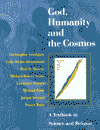Influences on DarwinDarwin derived his ideas from a combination of sources: i) an extensive study
of nature, especially on his famous voyage on HMS Beagle in 1831-36. His
observations on the Galapagos Islands were a key ingredient in his later
reflections. Each island had a different environment, and its own combination
of wildlife. Darwin collected a range of birds which seemed to resemble
finches. Each had different characteristics appropriate to the different island
habitat in which they lived. At first Darwin gave them little attention. But
his thought was greatly spurred on when John Gould, who dissected the Galapagos
finches back in London, told him that the different finch-samples belonged to
different species. The most likely explanation was that they derived
from a small number of finches of one species blown across the ocean from South
America, and that they had developed differently in their different island
habitats. ii) a study of artificial
breeding techniques, for example the selection of different attributes in
pigeons, dogs and horses, each of which are mentioned in the Origin. Darwin wrote ‘here, then, we see
in man’s productions the actions of what may be called the principle of
divergence, causing differences, at first barely appreciable, steadily to
increase, and the breeds to diverge in character both from each other and from
their common parent.’ iii) his wide reading.
Originally Darwin had been intended to take orders in the Church of England. At
Cambridge he read William Paley’s Natural
Theology, and noted the amazing properties of adaptedness that living
things seemed often to possess. (However, his proposal of natural selection was
utterly to supersede Paley’s argument
from design.
Email
link | Feedback | Contributed by: Dr. Christopher Southgate and Dr. Michael Robert Negus
|





